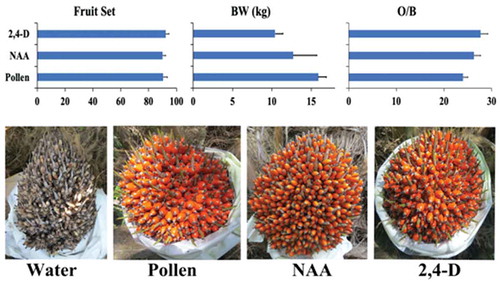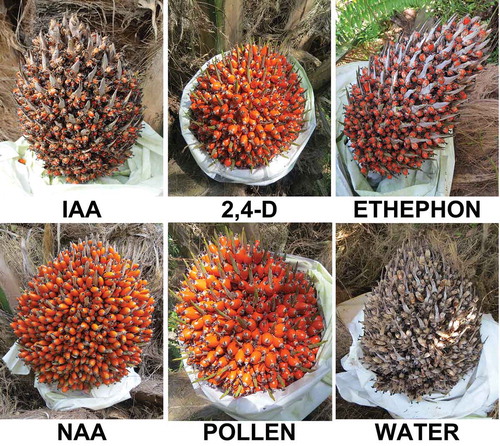Figures & data

Figure 1. Phenological stages (PS) for the plant hormone application and evaluation. A. PS 603 (Pre-anthesis 3). B. PS 607 (anthesis). C. 7 days after anthesis (7 daa). D. 14 days after anthesis (14 daa)

Table 1. Proportion of bunches formed from the inflorescences treated with hormones, pollen or water for the induction of parthenocarpy in the OxG hybrid
Figure 2. Effect of the application of plant hormones and pollen on the formation of fruits and bunches in the OxG interspecific hybrid. IAA: Indole acetic acid. 2,4-D: 2,4-dichlorophenoxyacetic acid. NAA: Naphthalene acetic acid

Table 2. Bunch components in OxG hybrids treated with ethephon, IAA, 2,4-D, NAA, and assisted pollinated for the induction of parthenocarpy
Table 3. Profile of fatty acids in oil of OxG hybrid (Coarí x La Mé) treated with ethephon, IAA, 2,4D, NAA and pollen to induce parthenocarpy